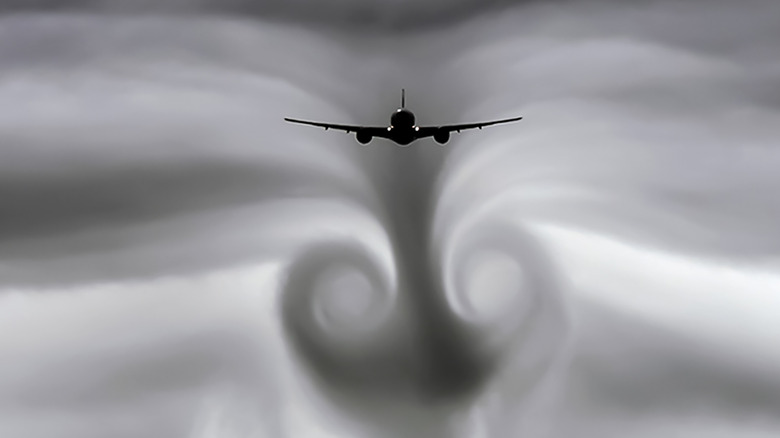How Airplane Turbulence Can Cause Injuries
Turbulence has seriously injured nearly 150 people on airplanes in American airspace from 2009 to 2021, according to the Federal Aviation Administration. This figure includes both passengers and crew members, and the agency defines these injuries as those that required hospitalization for more than two days, second or third-degree burns, and broken bones (but excludes any minor break of the nose, fingers, or toes). Those injured also experienced damage to their nerves, muscles, and tendons as well as hemorrhages.
Those statistics climbed significantly after the December 2022 incident on board a Hawaiian Airlines flight, per CNN. The plane hit turbulence as it approached Honolulu, its final destination. Emergency medical personnel cared for and assessed the injuries of those on the flight. Out of a total of 36 injured passengers and crew, 20 of them needed further medical treatment at a local hospital. But what causes incidents of severe turbulence like this?
Turbulence can be extreme
Turbulence demonstrates the immense power of air. The air surrounding a plane can be changed by such factors as jet streams, weather fronts, thunderstorms, and pressure changes (via the FAA). According to the National Weather Service, this naturally occurring problem has several degrees of severity. The scale used to measure the intensity of turbulence ranges from light to extreme. Light, as the name implies, indicates mild changes in the plane's position in the air. The flight starts to feel a bit bumpy for a time.
On the opposite end of the scale, there is severe and extreme turbulence. In severe turbulence, there are dramatic and sudden shifts in the plane's position, and pilots may temporarily lose control. Extreme turbulence literally shakes the plane up so much that it may become structurally compromised.
People — both passengers and crew — can be harmed in any level of turbulence, given the proper conditions. The plane can pitch up or down, rotate from side to side, and even spin during turbulence. This means that the contents of the plane can be tossed around, and the people inside may be jostled about.
Turbulence can shake everything up
Turbulence can cause an array of injuries, and many of those accidents happen when either passengers or crew members aren't wearing their seatbelts, per The Seattle Times. It is often the flight attendants who are injured because they are out of their seats much of the time, making them 27 times more likely to get hurt. They have suffered broken bones and other injuries from being thrown about during an incident of turbulence.
In addition to turbulence tossing people around, these incidents also turn objects in the plane into projectiles. A New York Post report showed images of the chaos resulting from a case of severe turbulence on an October 2022 Aerolineas Argentinas flight from Spain to Buenos Aires. Debris filled the plane's aisles and galley areas as a result of the incident. Anything that wasn't stowed away securely went flying, and several sleeping passengers who weren't buckled up also got tossed into the air. There has been some dispute on whether the fasten seatbelts light had been illuminated at the time.
Experts warn that climate change may increase the amount of turbulence, according to CBS News. As severe weather events become more frequent, turbulence will be on the rise as well. So the best way to stay safe in the air is to buckle up and listen to instructions from the crew.


